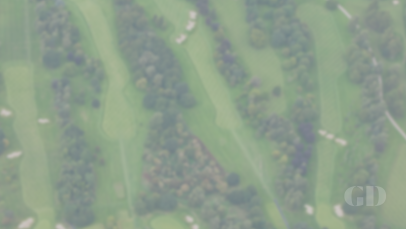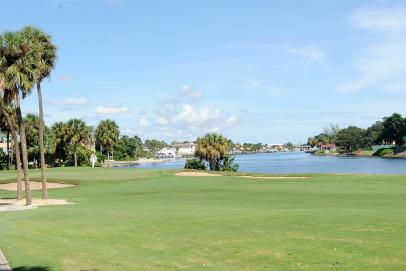Courses
Best golf courses near Jupiter, FL
Below, you’ll find a list of courses near Jupiter, FL. There are 69 courses within a 15-mile radius of Jupiter, 12 of which are public courses and 56 are private courses. There are 64 18-hole courses and 3 nine-hole layouts.
The above has been curated through Golf Digest’s Places to Play course database, where we have collected star ratings and reviews from our 1,900 course-ranking panelists. Join our community by signing up for Golf Digest+ and rate the courses you’ve visited recently.
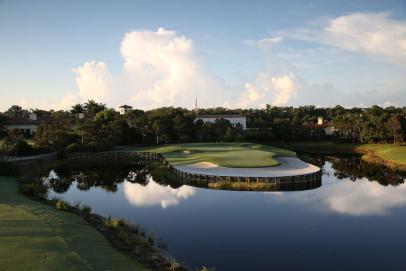
Trump bought the Ritz-Carlton resort in 2012. Its Jack Nicklaus design is one of a number of quality courses in the area—including the Bear's Club down the road and the Floridian.
View Course

The Bear’s Club marked a transition point in Jack Nicklaus’s design outlook when it opened in 1999. His architecture had typically been analytical and, while still lovely, oriented toward factoring how players might break down the features tactically. That strategic backbone is present in The Bear’s Club, but the team approached the design more holistically than they had previously, factoring in aesthetics to an unprecedented degree. Instead of building holes on a golf site, Jack and his associates created a golf environment, expanding and enhancing a dune ridge running through the low pine and palmetto scrub and anchoring large, sensuous bunkers into the native vegetation. The course is part of an upscale residential development near the Intracoastal Waterway, but it blends so well you wouldn’t know it. The change in perspective that Nicklaus Design developed at The Bear’s Club pushed the firm toward similar successes in the 2000s like Sebonack (with Tom Doak, no. 43), The Concession (no. 133) and Mayacama (no. 137).More from Golf Digest Architecture Editor emeritus Ron Whitten:Forgive me if you've read this before. This review of The Bear's Club, the Jack Nicklaus design that opened on Dec. 31, 1999, making it perhaps the last new golf course in America to open in the 20th Century, was first published in the late, great Golf World magazine, in the April 6, 2001 issue to be exact. Since Golf World was never digitized, to my knowledge, and the only collections of back issues known to me are at Golf Digest's offices and my own office, I suspect very few of you have read this recently. I repeat it here partly because it's also about my one-and-only round of golf with the legend, Jack Nicklaus.Here it is, from early 2001:There is no steely determination in Jack Nicklaus's game anymore - at least there wasn't during a recent casual round on his latest design, The Bear's Club, an exclusive private club in Jupiter, Fla. Instead, Jack spent the day needling his son, Jackie, grousing about imperfections in the hybrid Bermuda fairways, questioning the quality of the pine straw on the walking paths, hitting a couple of squirrely drives, making a couple of brilliant recoveries and cracking jokes.Yes, Jack Nicklaus has a sense of humor. He looked in my bag, filled with Nicklaus brand clubs, with angular clubfaces and shafts that had the flexibility of broomsticks. "Are these your clubs?" he gasped mockingly.No, I responded. They're loaners from the pro shop."Didn't think so," he said, then paused for the punchline. "I've never met anyone who's actually bought my clubs."Later, on the fourth green, bearing down on a 40-footer for a birdie, I hit it fat, advancing the putt maybe 10 feet. Jack walked over to me and whispered, "That my putter, too?"It was a comfortable round with Jack, in part because The Bear's Club is impressively comfortable. It's not your typical condo-covered, lake-laden Florida course. It's old Florida, with lots of pines and palmettos, and slightly scruffy around the edges. There's a natural 12-foot-high sand ridge running across the site. Jack enhanced it and added a couple of others that look equally natural. He integrated the design into its environment by retaining native brush wherever possible, separated from playing areas by transition areas of sand and pine straw. I loved the bunkering. It was big, high-banked, sweeping stuff, a very un-Florida-like in look and feel, using an imported grade of sand from Ohio that won't wash out with every rain shower. The back sides of most bunkers are merged into native sand and pine straw, so they look like blowouts emerging from sand dunes.Did I make a fool of myself while playing with Jack? Yes. On the 10th hole, we grabbed some apples from an ice cooler. Later, as Jack's friend Ivor Young helped me look for my ball on the edge of a lake, he finished his apple and casually tossed the core into the drink. So I did the same, but tossed mine back over my shoulder. A few seconds later, I heard Jack yell out Young's name."Ivey," he yelled. "What are you doing, throwing that apple in my lake? I don't want your apple floating in my lake."Ivey laughed. Jack didn't."I'm serious," he said as he hustled over. "Apples float. Look, look. There it is. Floating in my lake. Go get it."So Young got a club from his caddie and fished the apple core out of Jack's lake. I said nothing, but after I hit to the green, I casually moonwalked back to fish my apple out of the lake. But by then it was floating too far from shore. So I walked off, waiting for Jack to jump me for littering. But he never did. He obviously never saw my transgression.I committed more foolishness in the clubhouse after the round. I began ranting about The First Tee program, complaining too many projects are being built for too much money, leaving no funds for long-term maintenance and operations. It's golf's equivalent of a Democrat's answer to everything, I said: Throw a lot of money at a problem, feel like you've solved it and pat each other on the back.Jack sat quietly while I huffed and puffed. When I finished, he said, "You know, Juli Inkster and I are national co-chairmen of The First Tee program."I took that as my signal to offer my thanks for the round and hit the road. The exit curved right along the lake on the 10th. As I drove out, I saw it floating out in the middle. My apple, Jack's lake.
View Course

As far as Jupiter-area courses go, The Dye Preserve is a bit off the beaten path, nearly 10 miles inland and west of I-95. The Pete Dye design has many of the late architect’s defining features, including railroad tie-lined water hazards, deep pot bunkers, teardrop mounding and intimidating sightlines. With the tips nearly reaching 7,300 yards and course rating just shy of 76, the course is a stern test. Like many Jupiter courses, PGA Tour and LPGA Tour players are members at The Dye Preserve.
View Course

Loxahatchee was a course of its time when it opened in the 1980s. Jack Nicklaus studded it with sharp chocolate-drop mounding around greens and fairways that was all the rage as architects began fiffing on the shapes Pete Dye was building. That kind of thing soon went out of style and most of those features have since been removed from Loxahatchee. What's left behind is less dated but nevertheless a quintessentially Florida 1980's-style penal design with 14 holes that have water in play, including the possibility of rinsing your ball hitting into at least 11 greens.
View Course

A majestic Donald Ross design with a clever routing on a rectangular site, each hole at Seminole encounters a new wind direction. The greens are no longer Ross, replaced 50 years ago in a regrassing effort that showed little appreciation for the original rolling contours. The bunkers aren’t Ross either. Dick Wilson replaced them in 1947, his own version meant to the imitate crests of waves on the adjacent Atlantic. A few years back, Bill Coore & Ben Crenshaw redesigned the bunkers again, along with exposing some sandy expanses in the rough. Seminole has long been one of America’s most exclusive clubs, which is why it was thrilling to see it on TV for a first time during the TaylorMade Driving Relief match, and then again for the 2021 Walker Cup.
View Course
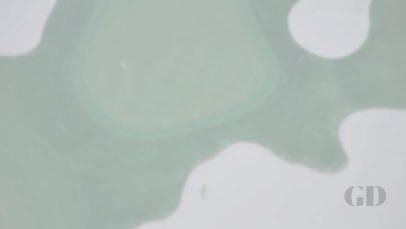
Jupiter Hills Club Village Course in Tequesta is one of the best golf courses in Florida. Discover our experts reviews and tee time information.
View Course

If there’s such a thing as an undiscovered Tom Fazio design, it’s McArthur Golf Club, a players-only layout he did in conjunction with PGA Tour star Nick Price. It’s little-known because of its neighbors, No. 111 Jupiter Hills, a few miles south, Hobe Sound G.C., one of Joe Lee’s finest, just a few miles closer, and Greg Norman’s Medalist right next door. McArthur sits astride the same sand ridge upon which Jupiter Hills and Medalist were built, and while Fazio had to deal with wetlands and easements in his routing, he framed each hole with acres of exposed white sand in the form of dunes, slopes and hollows to provide McArthur with a singularly stunning look that’s unlike any of its rivals. With those wide expanses of sand, McArthur started a trend that continues today.
View Course

Old Marsh Golf Club in Palm Beach Gardens is one of the best golf courses in Florida. Discover our experts reviews and tee time information.
View Course
%20-%2015th%20hole%20-%20Larry%20Lambrecht.jpg.rend.hgtvcom.406.271.suffix/1573162582732.jpeg)
As an old pro from Pine Valley who lost an Open at Merion, George Fazio blended features of both of those great courses into his design at Jupiter Hills, the high point of his second career as a golf course architect. Built from a distinct sand ridge that runs laterally along the Atlantic seacoast north of West Palm Beach, Jupiter Hills was inexpensive to construct. The terrain was so good, only 87,000 cubic yards of earth were moved. A decade after it opened, George Fazio retired near the property, and couldn’t resist constantly tinkering with it. He ultimately removed many of its most unique, Pine Valley-like aspects. Thirty years later, his nephew Tom Fazio, who had assisted on the original, re-established many of those early characteristics, emphasizing the prominent sand ridge on which George first routed the course.
View Course
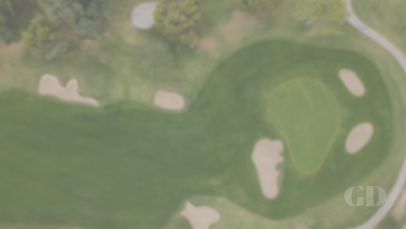
Situated on a tight, triangularly shaped property about a mile from the Atlantic Ocean in Hobe Sound, Fla., Loblolly is a challenging Pete and P.B. Dye design. Angles are key at Loblolly, as many of the narrow and tilted greens are best attacked from one side of the hole. The par-3 16th is one of the more dramatic holes on property, as any shot coming up short and right will filter down into a bunker 20 feet below the putting surface. Golf course builder Jim Urbina has recently overseen a comprehenive renovation to preserve the Dye character.
View Course

Medalist is a long, demanding course that can stretch out to roughly 7,600 yards, a necessary requirement when the membership includes Tiger Woods, Dustin Johnson, Rory McIlroy, Brooks Koepka and many more of the world’s top professional players. They like The Medalist for the relaxed atmosphere and local convenience, but also because it’s a demanding driving course—the holes circle through an undeveloped sanctuary of wetlands and low scrub vegetation one parcel south of McArthur (no. 179) and are buffeted by the strong Atlantic crosswinds from every direction. Pete Dye designed Medalist with co-founder Greg Norman (this was one of Norman’s first U.S. designs) and the course features Dye’s S-shaped holes curling around sand buffers, slinky ground contour, and small, low-profile greens that bleed into short-grass surrounds. The course had undergone numerous modifications and formalizations in the late 1990s and early 2000s, but Bobby Weed reclaimed much of original Dye character during a 2015 renovation.
View Course
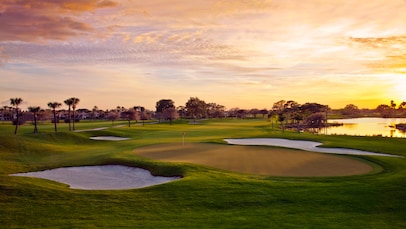
One of five courses at PGA National, the Champion Course hosts the Honda Classic every year. Originally designed by Tom and George Fazio for tournament play, Jack Nicklaus redesigned the course in 2014, creating the infamous three-hole stretch aptly named "The Bear Trap." Routinely one of the toughest courses on Tour, The Champion is a true ball-striking test.
View Course
Find more courses near Jupiter, FL

